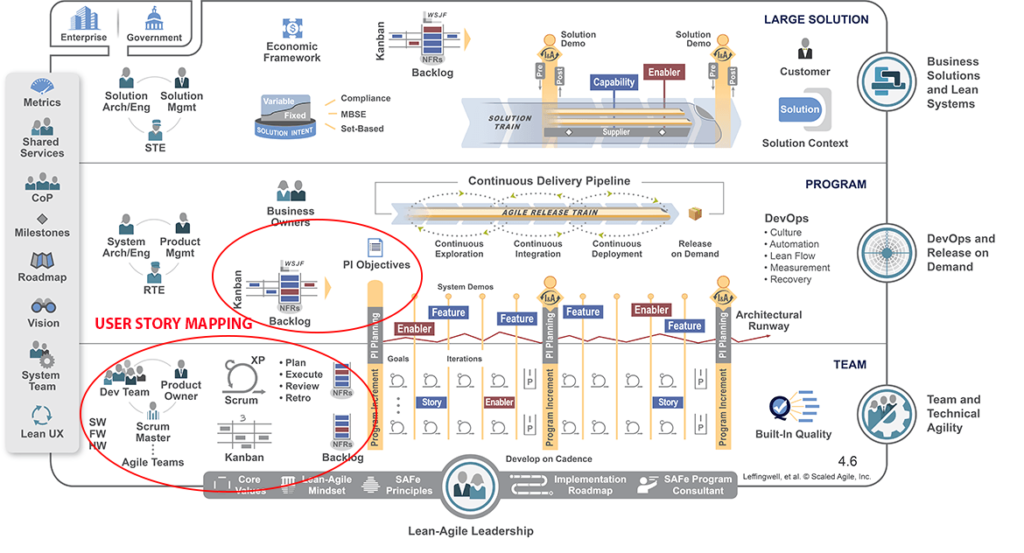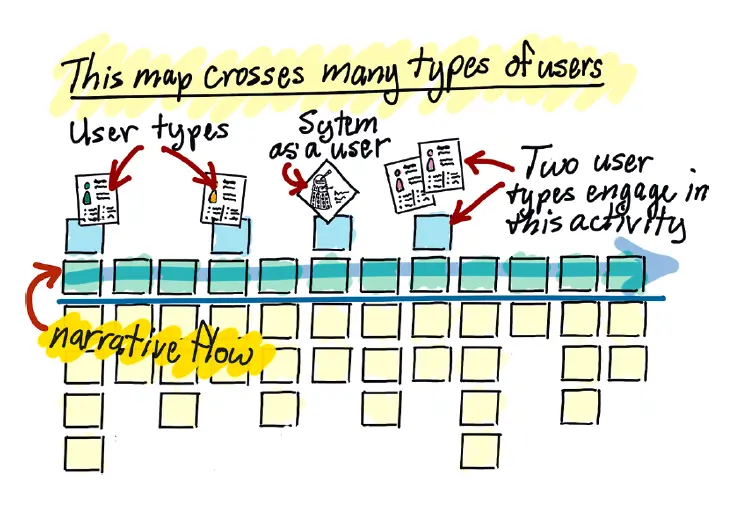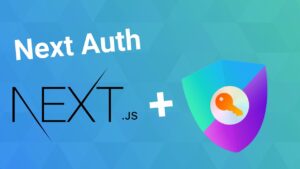The Scaled Agile Framework (SAFe) includes practices and principals for large scale software development efforts. The intent is to scale what works for smaller teams to larger enterprise by using agile and lean practices. The goal is to use processes like lean and Agile to decrease cycle times and coordinate work at scale. We occasionally get questions on where the user story mapping fits into the SAFe . SAFe doesn’t talk about user story mapping, but it does have a place.

The first place is in the Program Increment (PI) Planning. This is a crucial step in the process. Here you are determining what your objectives are and what you are going to build for the next increment. User story mapping fits nicely into PI planning and here is why. A user story map will give your team a much clearer vision of what you are building and why it matters. A backlog can fail at this. Backlogs are just a linear list of work and it’s tough to tell the story of what you are building, who you are building it for and why.
Instead, a user story map allows business stakeholders, product owners (PO), user experience designers to tell a “story” through the end user’s perspective. Those who are designing and writing the code will have a much better understanding of what they are doing and why. There are many different orthogonal views of digital products and some times those who are building don’t understand what they are doing and why – to no fault of their own. This is why what Agile calls the “Product Owner” is a vital role to any product’s success.
Teams often spend too much time building the wrong things due to poor understanding of what the true needs are. We recommend you watch our video o how to become a rockstar Product Owner so your teams are building the right features.
Before starting your sprints
Another great place to user story map is before your team starts a sprint. It’s a good opportunity for the Product Owner to get together with the dev team and discuss the work to be done. A user story mapping session here allows the team to break the work down further. When the story map is completed, it can be feed into either a backlog or kanban board for the current sprint.
For each card on the user story map, the PO or team should write acceptance criteria to prepare themselves for testing each story. Testing is a critical piece to SAFe. No one wants digital products that either don’t work or meet their needs. It is a huge waste of development resources to build the wrong product!
In closing, I want to give a huge shout out Jeff Patton, Chris Shinkle, Iman Tucker and David Hussman for teaching me what I know today about user story mapping! Check out the video below for some of David and Iman’s work.



